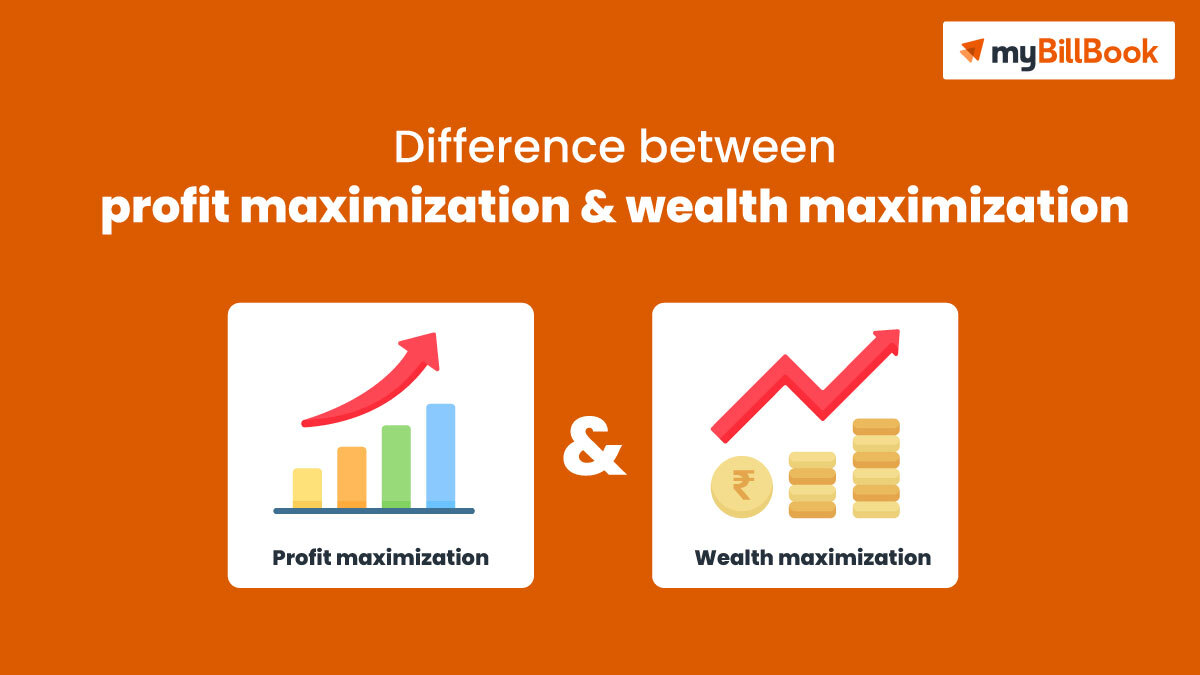Financial reporting gives you an insight into the financial performance of a business during a certain period. Tracking business metrics allows you to stay up-to-date with your business activities. If your business is not earning enough profits, you must know about it.
Regular financial checks can keep you on top of your business affairs. You can use these insights to make proper decisions for the further growth of your company.
What is Financial Reporting
Financial reporting is the practice of reporting a company’s financial performance and information over a period of time, typically quarterly or annually.
In financial reporting, companies record expenses, incomes, and other financial activities. The reports are generated using financial statements which help you gauge the direction in which the business is going in.
Businesses compile the data from different accounts to generate a comprehensive financial statement. Financial reports are made available for the stakeholders and the public to provide them with a good idea of the company’s financial situation as well as help them forecast its prospects. People who deal in stock markets can buy or sell shares based on this information.
Objectives of Financial Reporting
- Track cash flow
You need to know the sources of income and expenses of your business. You also need to know whether your business is generating a profit or incurring a loss. These criteria are important to measure the success of your business. You will also get a fair idea of whether your business will break even or you will have to take loans to cover your expenses.
- Providing information
When you have investors investing in your company, they have to know the financial status of your business to know how well their investments are being used. Financial reporting generates reports that give them the option to decide whether they wish to invest more in your company or withdraw their investments.
- Analyse assets and liabilities
Every company has a set of assets and liabilities. It is important to analyse them periodically and monitor any changes in them. These changes can affect the performance of your business. Financial reporting helps you understand what kind of performance you can expect from them and what you can do in case of future changes.
Documents Included in Financial Reporting
Financial reporting is done by generating various financial statements. These statements include the income statement, profit and loss statement, and balance sheet. There may be other disclosures detailing particular transactions. Some companies also issue cash flow statements.
A company can display any or all of its financial statements on its website, which the investors and public can easily access.
Importance of Regular Financial Reporting
It is important to perform financial reporting regularly because of the following points:
- It checks the income and expenses of your business
Tracking your funds is one of the most important parts of a business. Financial reporting allows you to monitor the income and expenses of your business. It is important to do this regularly for managing debt and allocating funds to appropriate areas. It also allows you to make plans on spending and borrowing.
Regular financial reporting also helps companies remain transparent about their financial dealings. Any investor can track a company’s assets and liabilities using its financial statements. Finally, financial reporting is necessary to measure business metrics which allow investors to check how their investments are being used and how a company is managing its debts.
- It provides information to key people
Shareholders, high-level executives, and investors use financial reporting data to study the performance of a company and make further decisions. They use this data for making investments, planning budgets, and so on. A company must maintain transparency in its financial dealings so that the people involved can make the correct decisions. A company can invite further funding from investors only if they can show their performance accurately using financial reporting.
- It ensures accounting compliance
Financial reporting includes using certain processes that all companies have to follow. These processes form a part of the mandatory accounting regulations. The financial reports generated by following these processes are presented in a particular format. This helps ease reading a report by any person in any financial or non-financial organisation. Financial reporting also helps you calculate taxes easily. It ensures your business follows tax regulations and other financial reporting regulations.
- It supports financial analysis
Financial reporting allows you to analyse business decisions. Financial statements are used to study the performance of your business. They allow you to study important financial data. Financial statements like balance sheets and profit and loss statements help you analyse financial data over several years and identify areas of profit or loss. Financial reporting allows you to create a spending plan and make accurate forecasts about your company’s performance.
Different Types of Financial Statements
A document that shows the financial details and transactions of a company is called a financial statement. There are several financial statements generated in financial reporting. These statements are used by the company and the stakeholders to measure its performance. The government and accountants use these documents to calculate taxes.
There are four main types of financial statements:
- Income statement
An income statement is also known as a profit and loss statement. It declares the company’s income, gains, expenses, and losses. The statement shows how much the company earned or lost during a certain period. It is useful for the shareholders to calculate how much the company’s net worth is.
- Balance sheet
A balance sheet shows the total assets and liabilities of a company. It also includes your current equity status. A balance sheet can be used to quickly calculate assets minus liabilities. Usually, balance sheets are generated quarterly to evaluate the performance of a company. These reports may include the data of annual balance sheets as well. A balance sheet also allows you to calculate your current debt coverage and liquid asset.
- Cash flow statement
A cash flow statement is used to measure the rate at which a company uses its funds to manage debts. It also shows how a company is generating income to support expenses. A cash flow statement can be analysed to study how efficiently the current revenue-generating practices are working, the spending patterns, and what can be done to generate more income.
- Statement of earnings
Though a balance sheet shows the shareholders’ equity, larger companies might prefer to disclose this data on a separate statement. The statement includes the amounts the stakeholders and owners have invested in the company. It also includes the company stocks and securities, which generate income for the company.
Who Can Benefit From Financial Reporting
Financial reporting is a process that allows businesses to analyse and review financial statements and make decisions that might affect the financial standing of the company. It also provides financial institutions with the proper documentation needed to analyse compliance, study debt management, and issue credit.
Several people and organisations study financial reports to assess the performance of a company. They are:
- Investors and shareholders
Investors and shareholders hold a share of the company stock. Hence, they must have access to the financial statements to check the company’s performance and how the company uses funds to generate profits.
- Creditors
Creditors study the financial statements to analyse the ways by which a company can pay off its debts and offer credit to allow growth. They need to know if a company is worth offering credit to.
- Executives
Employees holding high posts in the company, usually managers and above, have a stake in the company stocks. These executives use the financial reporting statements to gauge the performance and improvise operations. Financial reporting also allows them to set new goals for the company and allocate departmental responsibilities.
- Financial regulatory institutions
Regulatory institutions review the financial reporting statements at periodic intervals. The government and the Income Tax Department check the financial reports for compliance and to calculate tax.
- Customers
When a company is completely transparent about its financial dealings, it helps maintain and develop a loyal customer base. If a company is involved in charitable activities, it is always better to be open about them to draw customers to your company.
- Employee unions
Employee unions need to be provided with financial reporting statements to ensure that the workers are getting fair pay for their work. Employee unions can also decide whether working in a company is profitable for them or not by analysing financial statements.
Different Methods of Financial Reporting
There are three main ways of financial reporting. These methods ensure that the reports generated are standardised and easy to read across the world.
- The GAAP (Generally Accepted Accounting Principles)
This system is used in the United States of America almost exclusively.
- The IFRS (International Financial Reporting Standards)
This system is used in many countries, including India, China, and Australia.
- The GDPR (General Data Protection Regulation)
It is used since 2018 and is used to protect sensitive financial data.
Benefits of Financial Reporting
The benefits of financial reporting are as follows:
- It improves debt management
A business must know the range of its debts. It is well-known that debts can crush a company if not handled properly. Financial reporting helps you track your assets and liabilities to gauge how many liquid assets you have and how you can manage debts using these assets.
- It identifies financial trends
Every industry follows certain trends. Financial reporting statements help you analyse different trends in the past to predict the trends in the future. For example, if a certain event caused your sales to go up, you can predict that the sales will go up the next time the event occurs. Though this is a simplified example, it gives a rough idea of how financial reporting works.
- It tracks your finances in real-time
Real-time financial reporting helps you take a critical decision in a short time. This is possible only due to the accurate reports you can get in real-time, which will give you a fair idea of the financial matters of your business.
- It analyses liabilities
Liabilities are a part of all businesses. However, analysing financial reporting statements can decide how you manage the liabilities. For example, loans, credits from vendors, credit cards, etc., are some of the liabilities you might have.
- It helps in business expansion
This is directly associated with analysing liabilities. If you wish to expand your business, it might be a good idea to analyse your abilities first. You can then decide whether you want to tackle the liabilities first or proceed with the expansion.
- It ensures compliance
Financial reporting software generates accurate data that are completely GST-compliant. This is essential for the smooth running of a company. It also helps in calculating taxes and filing returns easily.
- It analyses cash flow
Revenue generation and cash flow are very important to a business. It is essential to put the funds generated to maximum use. You can use the financial reporting statements to analyse cash flow and let it generate more funds by making proper investments.
- It allows remote access
With the expansion of businesses into the worldwide web, it has become necessary for you to be able to study your business metrics on the go. Financial reporting software is now available on multiple devices that you can use to generate statements anywhere, anytime.
Limitations of Financial Reporting
Though financial reporting has many benefits, it has a set of disadvantages too:
- Costs are calculated using historical data
Financial statements such as balance sheets contain the cost of assets and liabilities. These costs are recorded at the time they are purchased or loaned. However, assets and liabilities have costs that value over a period of time. While some of the costs are adjusted to include inflation or depreciation, fixed asset costs remain unchanged. This could lead to major calculation errors.
- Inflation is not included
Every economy faces inflation. If the rate of inflation is high, but the costs of the assets remain unchanged, it could lead to a huge difference between the current values and the original costs.
- Intangible assets are not included
Financial statements do not record intangible assets. The cost incurred to gain an intangible asset is recorded as an expense. This method of financial reporting can be harmful to start-ups and small businesses as they have a large quantity of intellectual property, but their sales are less.
- Only specific times are considered
A user might consider the financial statements of a certain period and draw conclusions about the company’s financial health. There may be sudden peaks or dips in sales which do not reflect the company’s sales pattern.
- Comparison may not be possible
Every company has a different method of generating financial statements. If someone wishes to compare the financial statements of two companies, it might not be possible as both are in different formats.
- Fraud may go undetected
If there is too much pressure on the employees to perform better, they might resort to entering the wrong values just to get a bonus or a promotion. This causes major problems while auditing.
Conclusion
Financial reporting is an important aspect of a business. It allows you to study previous patterns and helps you predict future performances and make decisions accordingly. It is useful for owners, stakeholders, partners, and shareholders.
Computerised financial reporting systems are now taking over the traditional manual version. These systems provide accurate and fast results and allow you to make quick decisions. They access bank data, address redundancies in ledger entries, and generate financial statements you can view at any time.
Using these financial reporting systems will help you make the right decisions to let your business grow and earn more profits.
Read more:







